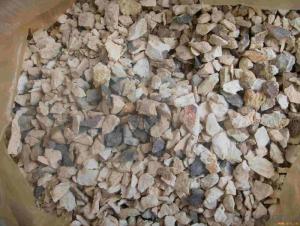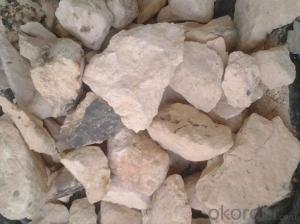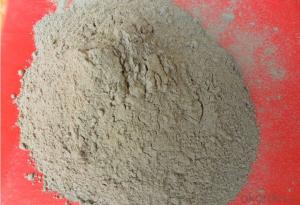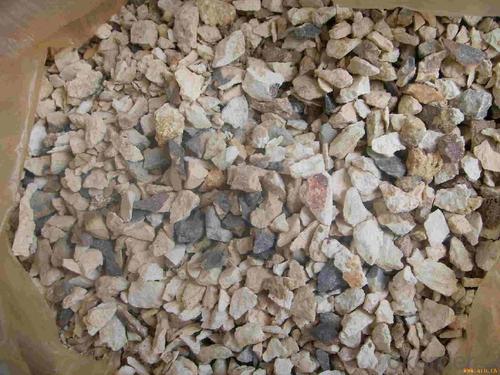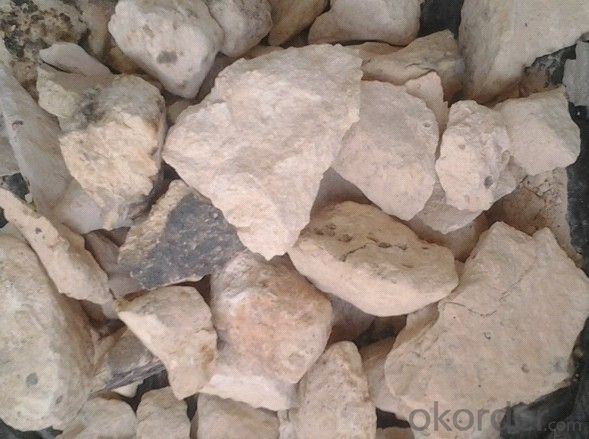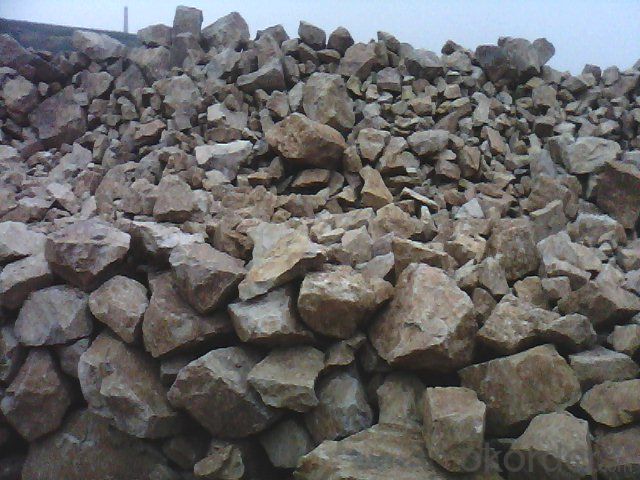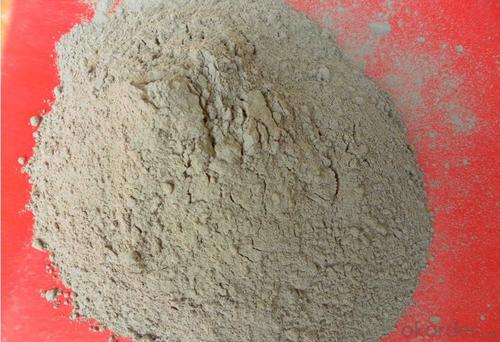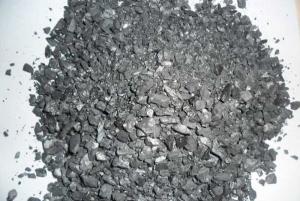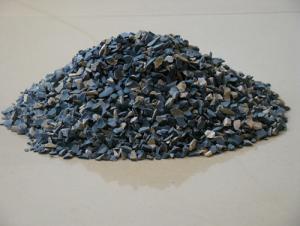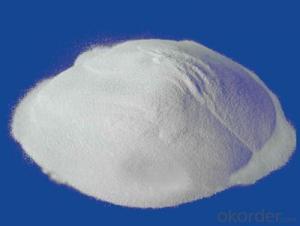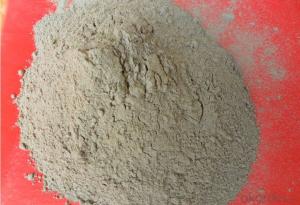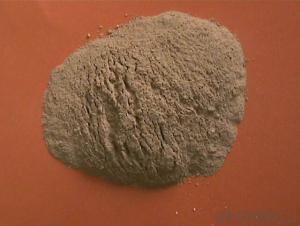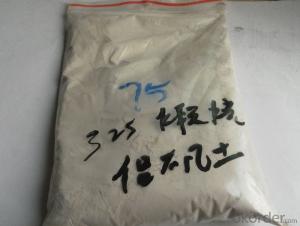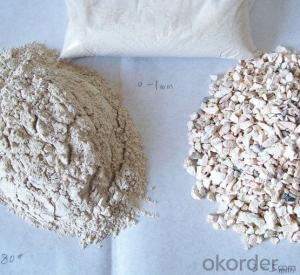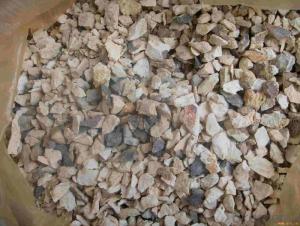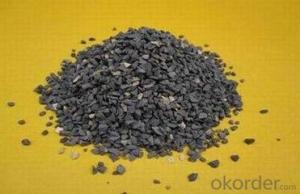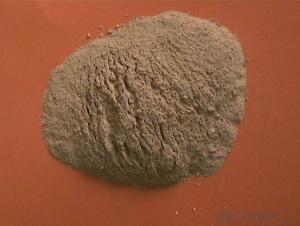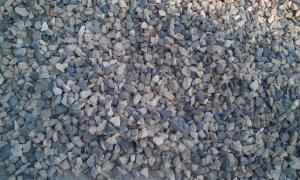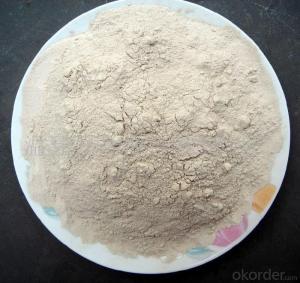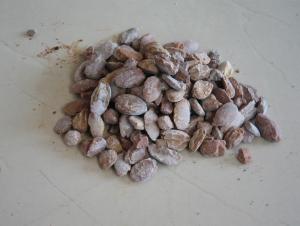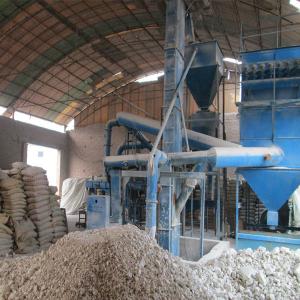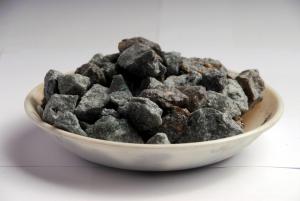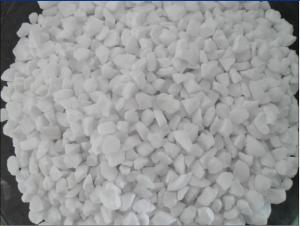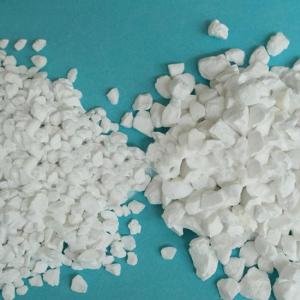Raw Materials for Refractory:China Natural Refractory Calcined Bauxite Low Price with Detailed Specifications
- Loading Port:
- Tianjin
- Payment Terms:
- TT or LC
- Min Order Qty:
- 111 m.t
- Supply Capability:
- 11111111 m.t/month
OKorder Service Pledge
OKorder Financial Service
You Might Also Like
1.Structure of Calcined Bauxite Description
Bauxite (aluminous soil; Bauxite) is also called the alumina or bauxite, main ingredients are alumina, hydrated alumina containing impurities, is an earthy mineral. White or gray, brown and yellow or light red by iron. From 4 to 3.9 g/cm3 density, hardness, 1 ~ 3 is not transparent, very brittle. Very difficult to melt. Insoluble in water, soluble in sulfuric acid, sodium hydroxide solution. Mainly used for aluminium, refractory material.
2.Main Features of the Calcined Bauxite
Calcined bauxite is one of the principal ore of aluminum. Calcined bauxite contains hydrous aluminum oxides and aluminum
hydroxides, formed through the laterization of aluminous rocks in tropical and subtropical areas .Calcined bauxite is obtained by calcining (heating)superior grade bauxite at high temperature (from 85OC to 1600C) .This removes moisture there.By increasing the alumina content,compared to an alumina content of about 57%to 58% in raw bauxite, calcined bauxite has an alumina content of 84%to88%.The heating is carried out in rotary kilns.
3.Main usage of the Calcined Bauxite
(1) aluminium industry. Used in national defense, aerospace, automotive, electronics, chemical industry, daily necessities, etc.
(2) precision casting. Alumina clinker made after the mould precision casting processed into fine powder. Used in military industry, aerospace, communications, instrumentation, machinery and medical equipment department.
(3) is used for refractory products. High bauxite clinker refractoriness is as high as 1780, chemical stability strong, and good physical properties.
(4) aluminum silicate refractory fiber. With light weight, high temperature resistance, good thermal stability, low thermal conductivity, heat capacity is small and the advantages of resistance to mechanical shock. Used in iron and steel, nonferrous metallurgy, electronics, petroleum, chemical, aerospace, atomic energy, defense and other industries.
(5) in magnesia and bauxite clinker as raw materials, add the appropriate binder, used for pouring ladle whole ladle lining has particularly good effects.
(6) manufacture alumina cement, abrasive materials, ceramic industry and chemical industry can be aluminum of various compound.
4. Calcined Bauxite Images
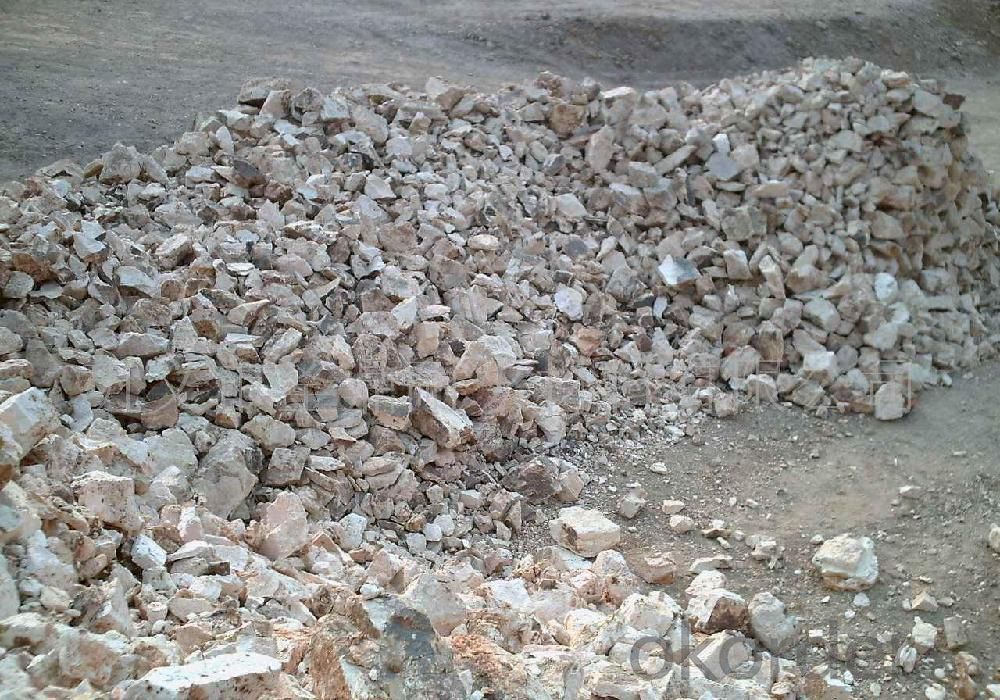
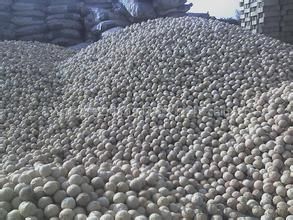
5. Calcined Bauxite Specification
Grade | AL2O3 | SIO2 | FE2O3 | TIO2 | K2O+Na2O | CaO+MgO | Bulk density |
HX75 | 75min | ≤17 | ≤3.0 | ≤4.0 | ≤0.3 | ≤0.5 | ≥2.70 |
HX80 | 80min | ≤12 | ≤3.0 | ≤4.0 | ≤0.3 | ≤0.5 | ≥2.80 |
HX85 | 85min | ≤8 | ≤2 | ≤4.0 | ≤0.3 | ≤0.5 | ≥3.00 |
HX86 | 86min | ≤7 | ≤2 | ≤4.0 | ≤0.3 | ≤0.5 | ≥3.10 |
HX87 | 87min | ≤6 | ≤2 | ≤4.0 | ≤0.3 | ≤0.5 | ≥3.20 |
HX88 | 88min | ≤5 | ≤1.8 | ≤4.0 | ≤0.25 | ≤0.5 | ≥3.25 |
HX90 | 90min | ≤3 | ≤1.8 | ≤4.0 | ≤0.25 | ≤0.5 | ≥3.3 |
Moisture(max) | 0.50% | ||||||
6.FAQ of Calcined Bauxite
1). Q: Are you a factory or trading company?
A: We are a factory.
2). Q: Where is your factory located? How can I visit there?
A: Our factory is located in ShanXi, HeNan, China. You are warmly welcomed to visit us!
3). Q: How can I get some samples?
A: Please connect me for samples
4). Q: Can the price be cheaper?
A: Of course, you will be offered a good discount for big amount.
- Q: Procedures for producing common refractory materials?
- The general procedures of producing refractory materials include calcination of raw materials, selection of raw material , crushing, grinding, screening, mixing, ageing mixture, molding, drying, burning and etc. At present, the refractory factory usually purchases the calcined clinker, so the calcination of raw material is no longer a consideration of common refractory plants.
- Q: What are the new refractories? What are the features? How about their application and development?
- In metallurgy, in what position should it be used, in order to make the best. Answers are as following. In iron, steelmaking or converter. When questioning, pay attention to the ways. Answers: Try to use synthetic refractory materials.
- Q: What are the characteristics of magnesium fireproof plate
- Fire Excellence: Glass magnesium plate is non combustible plate having good fire-resisitance quality. Flame will never burn continuously on it. It does not catch on fire when temperature reach 800 ℃, and will not be lit up at 1200 ℃. The plate, having high-quality keel partition system, is rated as the highest non-combustible level A1 with fire resistance being above 3 hours. It absorbs a lot of heat when fire is burning, delaying rise of ambient temperature. Waterproof and moisture proof: Glass magnesium plate functions steadily whenever weather is dry and cold or humid and damp, not influenced by condensed water drop and moist air. Even air dried after soaked in water for a few days, no deformation, it will not go out of shape, turn soft, or absorb moisture After testing, the board has no water permeability. Light weight and seismic resistance: Low overall plate density of 0.8-1.2g/cm3 reduces the building's load, and the weight of building interior wall by over 60%, and increases the use area by 5-8%. Its lightweight is conducive to anti-seismic, can effectively reduce main cost of foundation and structure. Superior strength: Magnesite has special 5.1.8 phase covered fiberglass cloth and good toughness of plant fiber. Altough glass magnesium fireproof plate is light, it has tight structure, good stability, wood-like toughness, outstanding performance in impact resistance, compressive strength, tensile strength equal rigidity and toughness, with flexural strength up to 322kgf\cm2 (vertical) and 216kgf\cm2 (level of) as well as impact strength of 25MPa.
- Q: How to classify the grade of wall fireproof and thermal inuslation matertial?
- The level classification of wall fireproof and thermal inuslation matertial: Grade A: incombustible building material: Material almost with no combustion. Grade B1: nonflammable building material: Nonflammable material has good flame resistance. It is difficult to fire in case of fire in the air or at high temperature. It is not easy to quickly spread. After the fire source is removed, combustion stops immediately. Grade B2: combustible?building?material: Combustible materials have a certain flame resistance. It will immediately burst into flames in case of fire in the air or at high temperature and is easy to lead to the spread of fire, such as wooden column, timber roof truss, timber beam, wooden stairs, etc. Grade B3: Flammable building material: It has no flame-retardant effect and is highly flammable. Fire hazard is very large.
- Q: What's the classification of flameproof glass, the refractory time of fireproofing glass.
- who knows the classification of fireproofing glasses, how long is the fire-resistant time?
- Q: How long is the fire endurance of the rock wool board?
- Hello. The limit is up to 2 hours. Of course such a thing is not desirable.
- Q: Does anyone know what is the use of waste refractory materials?
- 1.Waste refractory bricks can be reused to make the refractory bricks after being crushed by crusher, but the price is not very high. The purchasing price of refractory plant is ?60/ton. Because the refractory material has been calcinated for two times, it becomes easier to make bricks expansion coefficient with waste refractory bricks, but too much is inadvisable. If too much, the refractory materials would have a bad combination, which will give rise to loose bricks and incomplete corners. Nowadays, ordinary refractory plants would purchase waste refractory bricks to produce bricks, but better plants wouldn’t do this.
- Q: What level is the rock wool board fireproofing material ?
- The fire rating classification is a provision for all insulation materials, rather than to separately divide rock wool. Determine the value of the material fire rating according to the relevant test items of 8624. As the rock wool is made from basalt fusion, so it is the level A non-combustible material.
- Q: Who knows the fire endurance of B-level fireproof doors and windows?
- Rock wool board of B-grade fireproof doors keeps 46mm in thickness, doors that are generally used in relatively common fire fighting access, while A-grade fireproof doors are generally used in machine rooms, warehouses, oil depots and other important fire fighting access and flammable and combustible pulbic places. B-grade fireproof doors are more widely used than A-grade fireproof doors.
- Q: Can the teflon material resist fire?
- Teflon does not burn and with the ability of flame retardant.
Send your message to us
Raw Materials for Refractory:China Natural Refractory Calcined Bauxite Low Price with Detailed Specifications
- Loading Port:
- Tianjin
- Payment Terms:
- TT or LC
- Min Order Qty:
- 111 m.t
- Supply Capability:
- 11111111 m.t/month
OKorder Service Pledge
OKorder Financial Service
Similar products
Hot products
Hot Searches
Related keywords
